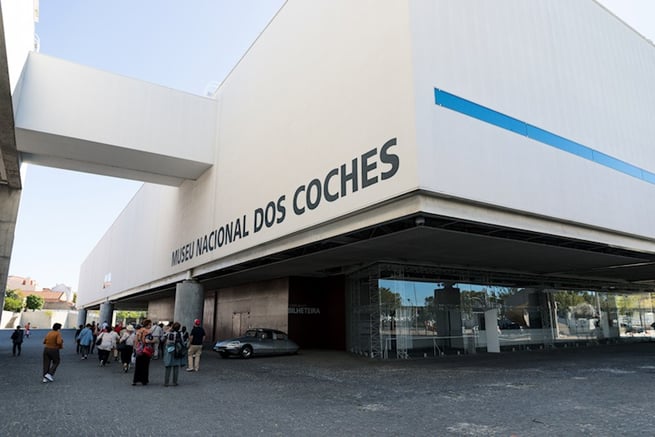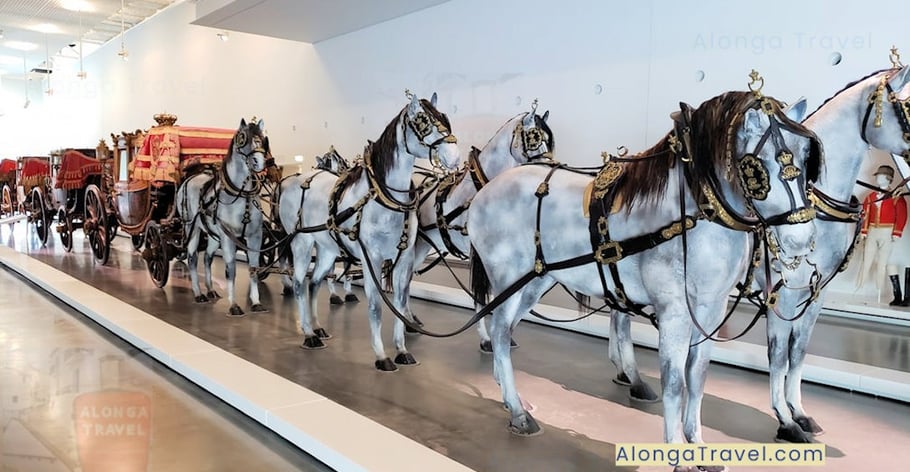

28 Coaches of National Coach museum in Lisbon; the pretty, the cool, and the "too much" carriages.
Learn about horse-drawn carriages (coaches) of the National Coach Museum in Lisbon in details.
I will show you many carriages, so you can decide which are which and if you should visit this museum. I believe it's a fun activity to do during your visit to Lisbon.
Let me know if you agree or disagree with my descriptions!:)
I also provide practical information for National Coach museum, and how to get there.
The collection of coaches presented in Lisbon carriage museum
Lisbon museum collection includes coaches, berlins, chariots, phaetons, mail cars, sedan chairs and other carriages—all of which are uniquely looking, and some were lavishly decorated in Baroque style. Watch my video above for details.
The collection of coaches
What is national Coach Museum of Lisbon?
National coach museum of Lisbon is a collection of over a 100 horse-drawn vehicles, called coaches or horse-drawn carriages. These vehicles were initially made for royalty and their household members to travel or hunt in style from 16th century to the beginning of the 19th century (the first cars).
Look at this beautiful red carriage. Isn't it special? There are many special coaches (carriages in this museum.
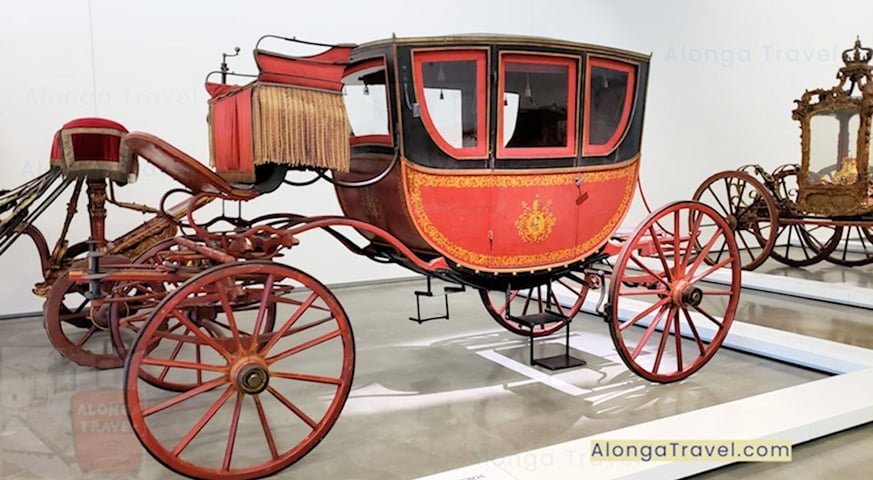

History of National Coach Museum
The Coach Museum in Lisbon was founded in 1905 by Queen Amélia de Orléans e Bragança, the wife of King D. Carlos I. It was located in a beautiful neoclassical building known as the Royal Riding Hall of Belém (above), which was designed by Italian architect Giacomo Azzolini.
Originally a part of Belem Palace, the museum showcases the magnificent wealth of the former Portuguese elite.


Why you should visit National Coach Museum Lisbon.
You should visit the National Coach Museum because it offers an exciting experience for those with a vivid imagination and a fascination with history.
Known for having one of the world's largest and most valuable collections of coaches, the museum is definitely worth a visit.
I even had the chance to touch the coach that Pope Clement XI traveled in back in 1715, which was a thrilling experience for history buffs or fans of The Three Musketeers books by Alexandre Dumas.
While I'm not sure if touching the exhibits is allowed, I got pretty close to the coach without getting kicked out and it was exciting!
Aside from its historical significance, it's enjoyable to imagine yourself riding in one of the coaches on display. I had a great time mentally exploring the possibilities and imagining the fun adventures I could have with the coach.
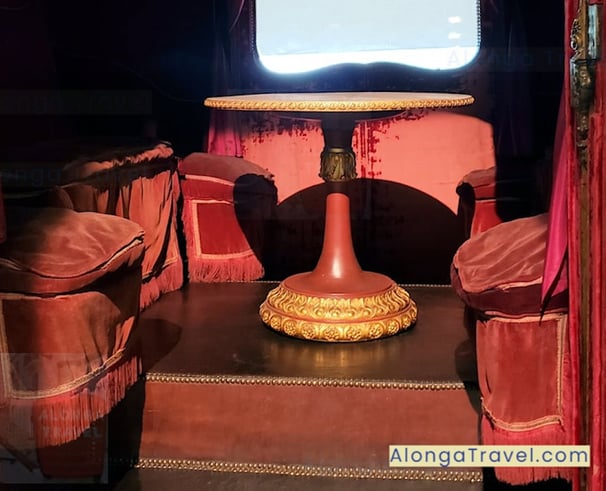

While some of the coaches made me cringe, I mentally sent them to my neighbors (I can be generous at times! 😉) as I had no desire to set foot in them.
Let me guide you through some of my favorites and least favorites. Picture yourself trying them on. I wonder if you'll agree with my views?
When you enter, you'll see a collection of quite extravagant coaches! 😊 This is because the coaches in the museum are arranged chronologically, reflecting the interesting idea from the 17th and 18th centuries that coaches should resemble the paintings of that era.
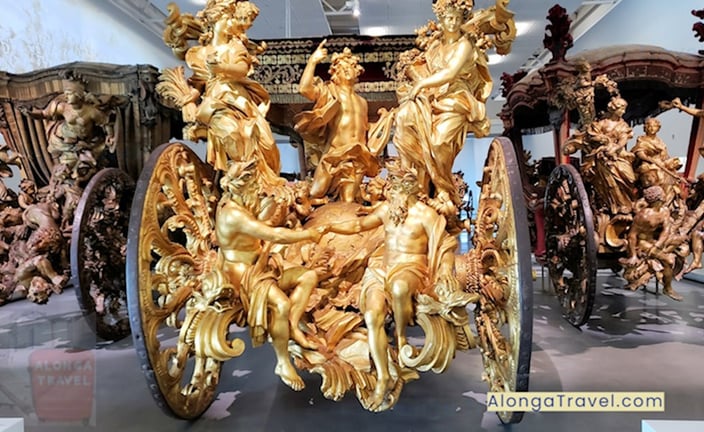

They combined various golden gods, goddesses, and family symbols, creating an extravagant spectacle on wheels to portray a story of family or national glorification, weighing 2 tons.
As an afterthought, they added a cabin for transporting people and dubbed it a coach. 😊
Historians later labeled it as Baroque Italian style and used sophisticated terms like exuberant gilt woodwork, etc. 😊
Like this Ocean coach above and below...
Visiting the National Coach Museum in Lisbon, Portugal






Ambassador's Coach, 1716
This is the coach that carried the ambassador D. Rodrigo Anes de Sá Menezes, Marquis de Fontes, into Rome.
I like to think of it as the historical version of today's billionaires' 'whose-rocket-is-bigger' competition. 😉
It certainly makes for an intriguing example, so I'm all for it!
Now that we've explored the extravagant carriages, let's move on to see what other coaches are on display.


Late 16th century Philip II's Coach
This rare example of a royal vehicle is the oldest coach in the Museum's collection. It belonged to King Philip II of Portugal, who used it on his visit to Portugal in 1619. Inside King Philip II of Portugal coach.
Looks at this fabric, it's SO old!!! It feels very special looking at it up close!
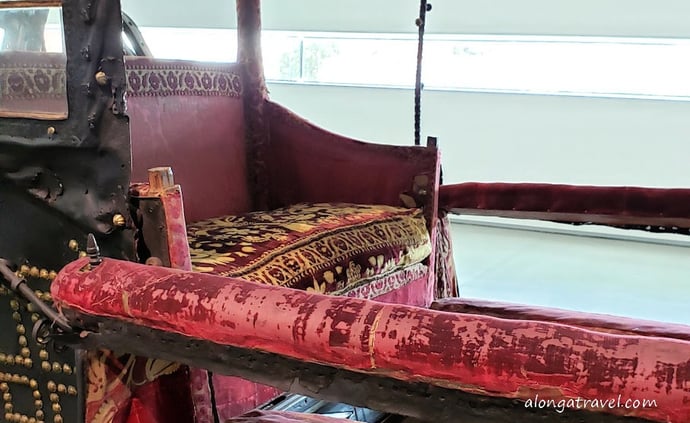

An Interesting fact: Do you know that King Philip II of Portugal was ALSO!.. King Philip III of Spain? But that double role was not enough, I guess?
So he also became the King of Naples, Sicily, and Sardinia, and Duke of Milan from 1598 until his death in 1621! I think this officially makes him the most greedy-for-the-titles King ever! 😉
POPE CLEMENT XI'S COACH
This couch was offered to King João V (John the 5th) by the Pope in 1715 for the baptism of the first-born prince, José.


Up close with Pope Clement XI's coach from 1715.
The red fabric is seriously impressive! It just screams centuries, history, power, intrigue, and maybe even a few crimes!
While you might feel like you're on a Hollywood set surrounded by various coaches, this one somehow brought a sense of reality to me!


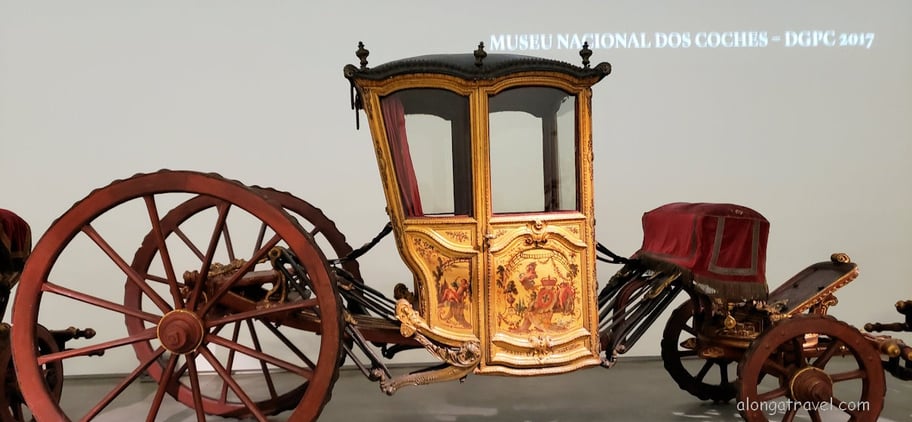

18TH CENTURY COACH OF THE "PALHAVÃ BOYS"
This coach was built for the children of Palhavã ( Meninos de Palhavã), the 3 male natural sons of King John V of Portugal (1706–1750), Infantes D. António, D. Gaspar and D. José, which were recognised by the monarch in an official document, found after the King’s death.
The name of the boys comes from the fact these three children had lived in the palace in the Palhavã area, which in those times was outside Lisbon.
Today, this building is occupied by the Spanish Embassy as the House of the Spanish Ambassador and this building is within the city limits.
An interesting fact: If you think, how sweet, even though the King was unfaithful to his Queen and had kids to prove it, at least he was with the same woman long enough to produce 3 boys with her... uh... wrong! :) All 3 boys were from different mothers! They all got a great education and D. Antonio became a Doctor in Theology and later knight of the Order of Christ; D. Gaspar became archbishop of Braga. And D. Jose became… General Inquisitor of Portugal!... ☹


18TH CENTURY INFANTS' COACH
This was a state vehicle used by Infantas D. Maria Francisca, which later became known as D. Maria I, who had to flee to Brasilia, and I have a story about here later in this post; D. Maria Ana, D. Maria Francisca Doroteia and D. Maria Francisca Benedita, daughters of King D. José I.


18TH CENTURY BERLINER OF THE ROYAL HOUSE
This vehicle was acquired by the Portuguese Royal House, from the Lencastre and Meneses houses. The coach has their Portuguese royal arms painted on it.
I would definitely enjoy owning this one!:)


18 CENTURY COACH FOR MARRIAGE OF D. MARIA I.
This coach was used by Queen D. Maria I, and the Royal Portuguese Arms were painted on it.
Stylish and just perfect, isn't it?
An interesting fact: Dona Maria I ( 1734 – 1816) was Queen of Portugal from 1777 until her death in 1816.
She was also one of the infants in the Infant coach I was mentioning about. She was known as Maria the Pious in Portugal and Maria the Mad in Brazil (she developed a mental illness quite early on), and was the first undisputed queen regnant of Portugal, and the first monarch of Brazil.
With Napoleon's European conquests, her court, then under the influence of her son João, the Prince Regent, had to move to Brazil in 1807. Back then, Brazil was still a Portuguese colony. Later on, Brazil was elevated from the rank of a colony to that of a kingdom, with the consequential formation of the United Kingdom of Portugal, Brazil, and the Algarve.
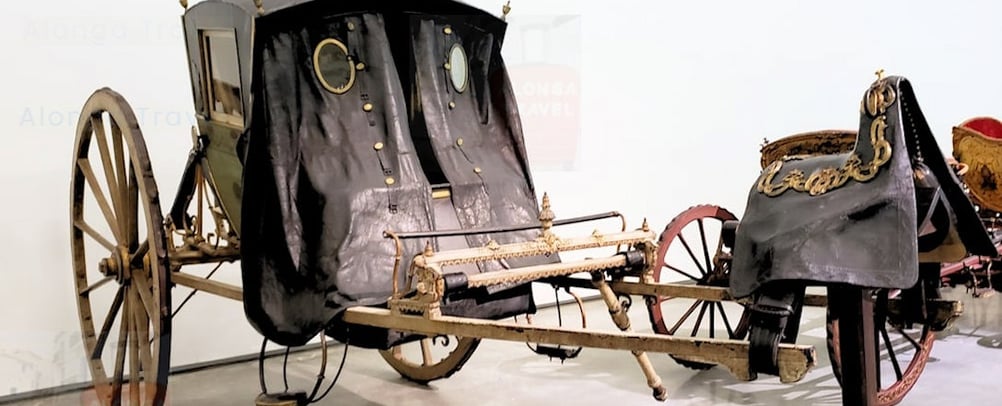

END OF 18TH CENTURY SUNGLASSES COACH.
Travel vehicle with two wheels and two seats.
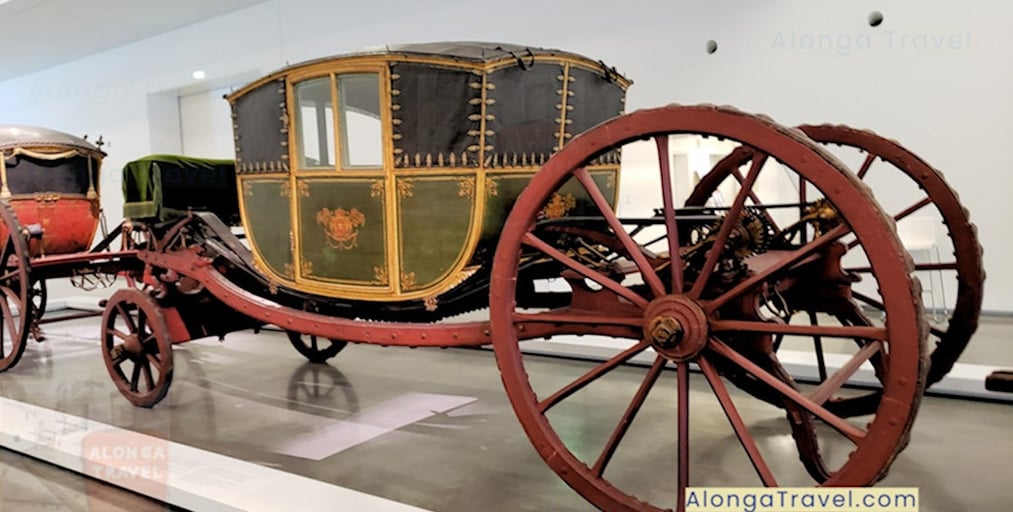

THE BEGINNING OF 19TH CENTURY BED BERLINER
This coach was actually a car for sleeping! (No wonder my check spelling keeps trying to spell this as a couch, not coach! 😉)
It could have been used as an open car, as it had a removable roof. The benches could be folded down on a platform to make a room for a bed. And it even had an evacuation door underneath for escaping! This carriage was suitable to be used for long-haul.
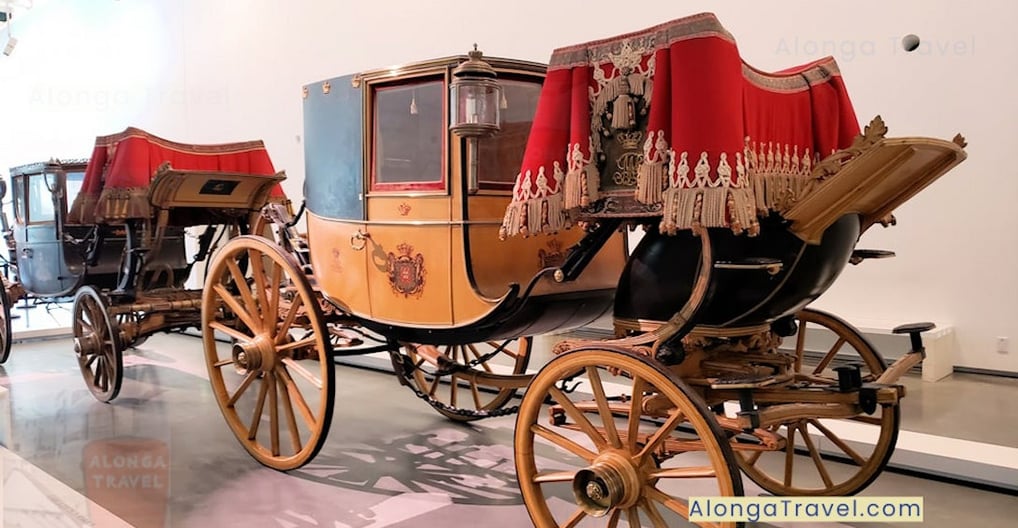

COACH OF D. MARIA II.
This coach was commissioned by the Portuguese Royal House in 1834.
I have to say I was eyeing this one, I am pretty sure I would have enjoyed rides there! I probably would have enjoyed being a member of the Portuguese Royal house as well!
😉 On the other hand, they had no Internet…. So, probably not!:)


LANDAU OF D. PEDRO V., 1834
This is another carriage I would have most likely enjoyed owning.
Would you?
Is is also an apparatus vehicle. I think it’s quite a stylish one. I might have even gotten this one, instead of the yellow coach of D. Maria II.
Actually, the red coach below is even better!
Which one do you like more?
19TH C. GALA CARRIAGE of Patriarchs


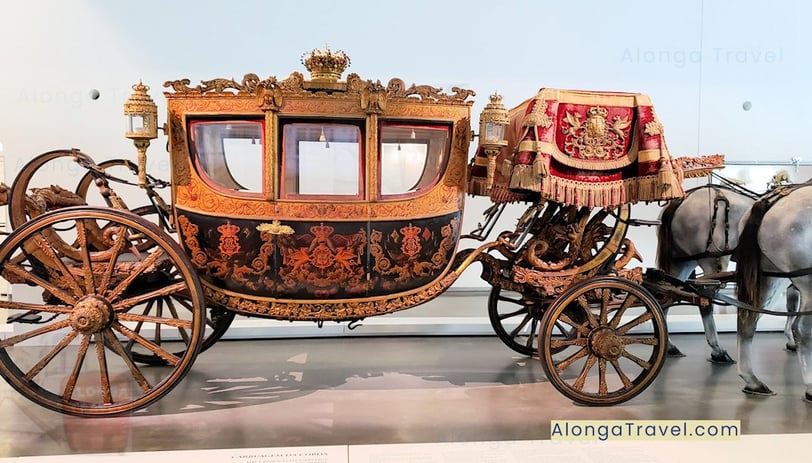

Royal CROWN CARRIAGE.
This carriage was commissioned in London for King João VI, by the Count of Póvoa, then Minister of Finance in 1834.
The coach was restored and changed for the coronation of King D. Carlos, and was used for the last time in 1957, when Queen Elizabeth II visited Lisbon.
CROWN CARRIAGE WITH HORSES


CLARENCE COACH.
This city car was given to D.Maria Pia, the wife of King D. Luis I, by her father King Vitor Emanuel II of Italy.
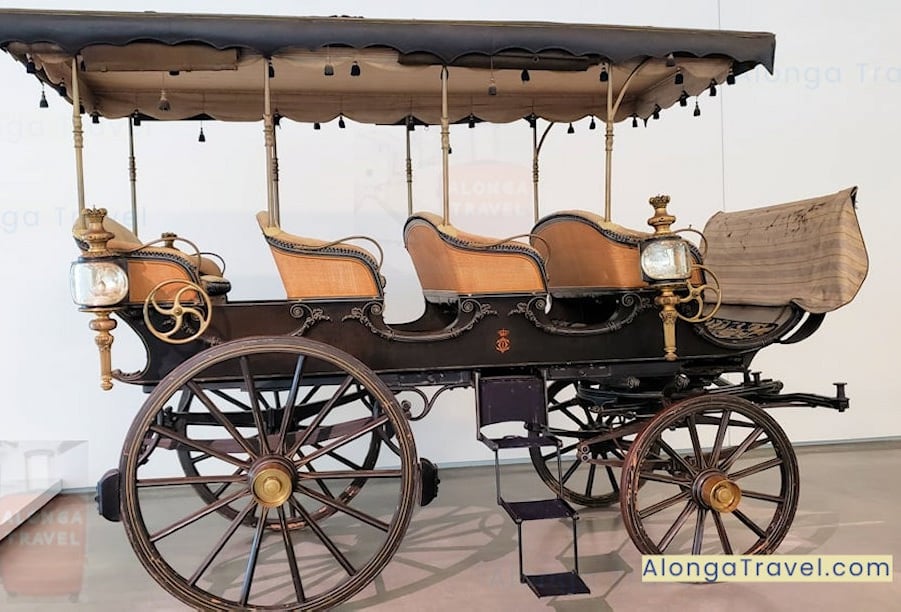

Modern days horse-drawn carriages
CHARABAN, 1850
This coach was commissioned by Queen D. Maria II. Its last user was King D. Carlos, whose monogram was painted on the car.
This vehicle was intended for country trips or for transporting hunters and companions.
We are entering a display of prototypes of the modern cars here! I think I like the modern collection even more! What about you?
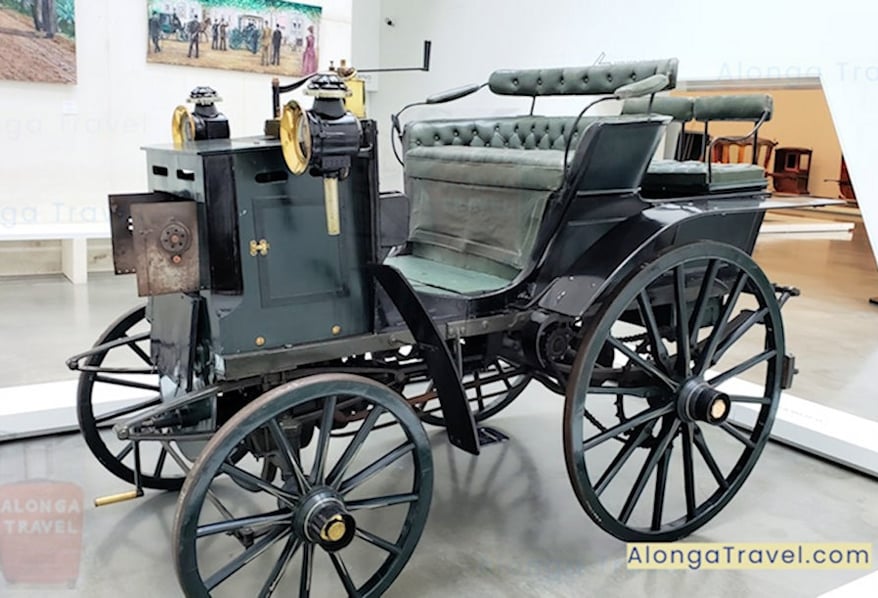

19TH CENTURY HUNTING CAR #1
When I first saw this car, I told myself that if this coach was made for transporting hunters, AND their dogs, and weapons as was stated on the explanatory plate, then both hunters and their dogs must have been VERY skinny! I mean – if they all could fit into this coach?!...
No wonder they went hunting, they were constantly hungry, poor things!:)
However, further research clarified that dogs were kept in the under-seat boxes, with breathing holes. The mystery solved!:)


19TH CENTURY HUNTING CAR
This was a state vehicle built for the use of the Patriarchs of Lisbon.
It also served as a field vehicle intended to transport hunters with their dogs and weapons.
A very cool-looking car! Was it a prototype to the Hummer?;)
Guys, probably, will like this one for sure!:)
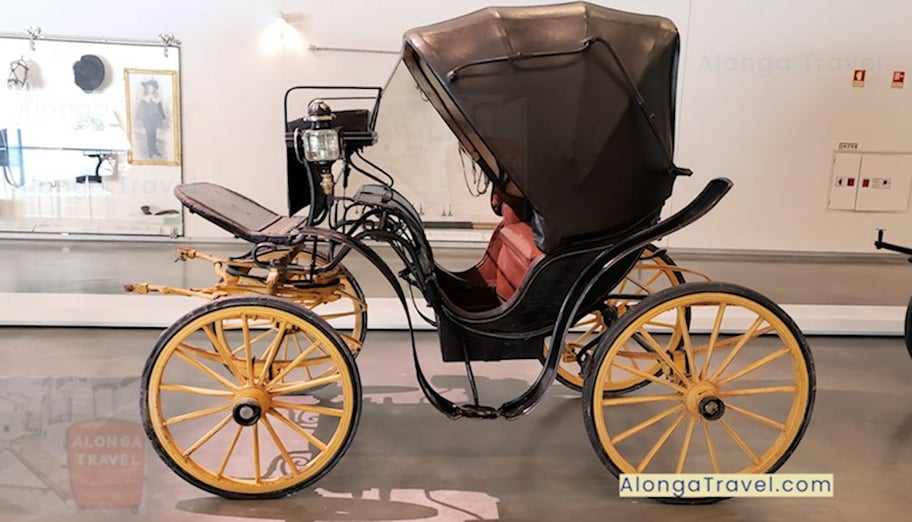

VICTORY COACH.
This passenger car owes its name to Queen Victoria of England. It belonged to the Viscount of the Court.
I think this couch looks like a photographer’s car. Doesn’t it look like something to do with the photography, or is it just me? 😊
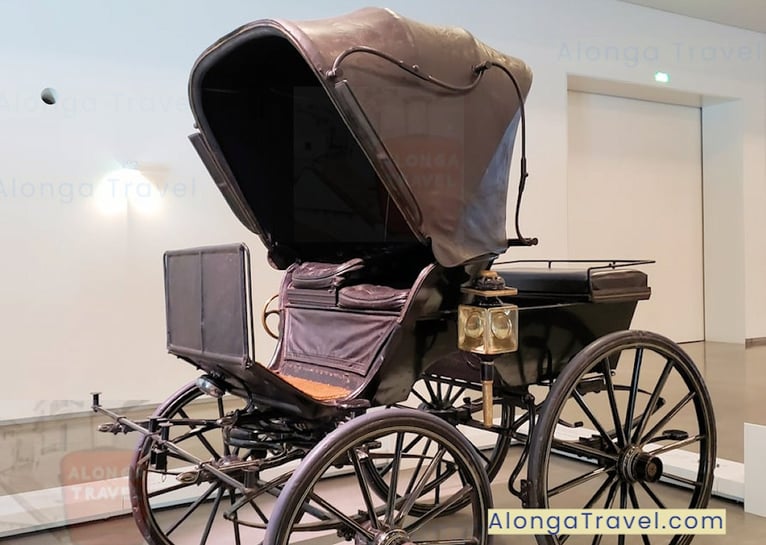

PHAETON
This car has an unusual design, because the service personal was riding in the back, while the owner was riding in the front and controlled the horse.
The service people were employed for taking care of the horse when the owner was not riding.
Guys are really starting to like these cars, I am sure!:) They like being in control!
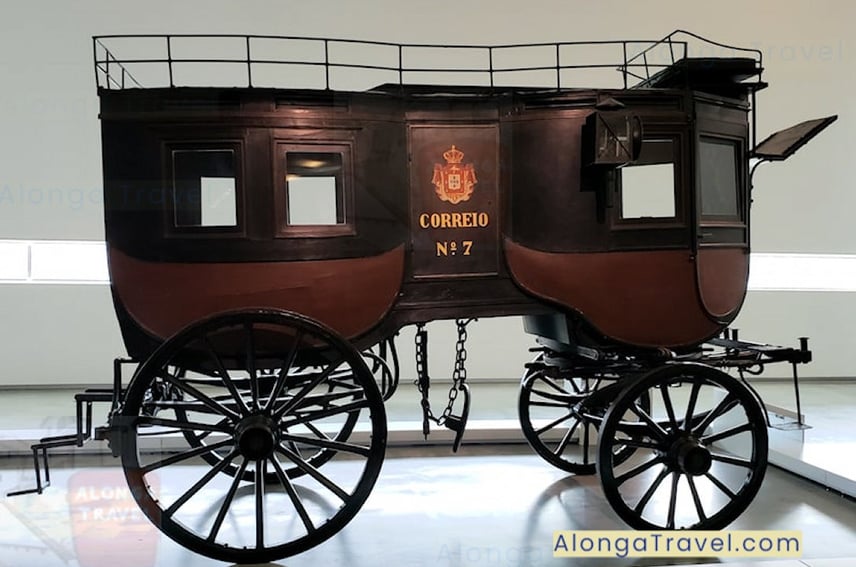

MAIL COACH, 1854
Travel vehicle for transporting the mail. It is made up of three parts: a coupé at the front, a roundabout or berlin at the rear and, in the center, a mailbox for the post office.
I guess you can call it a modern version of a long-distance 18-wheeler, where a truck driver can sleep?
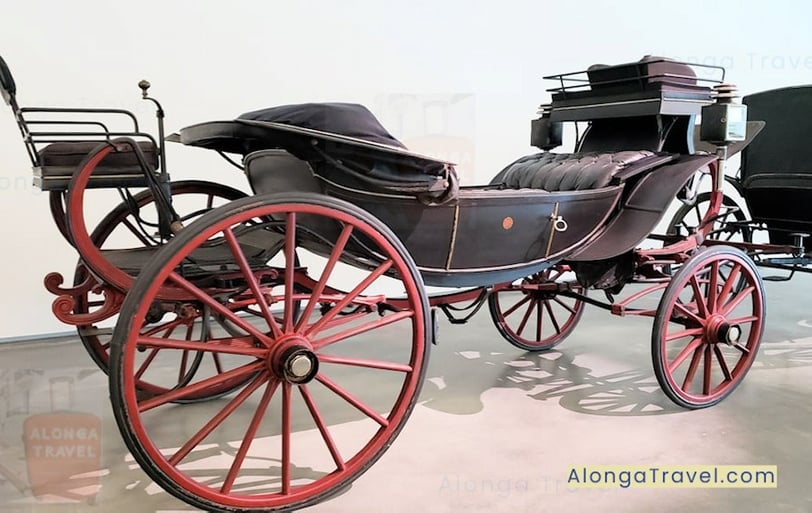

19TH CENTURY TROUSERS
Commissioned by the Royal Family, it passed in 1910 to the service of the Presidency of the Republic.
It had a convertible hood and the rider could sleep there, very neat!
Loss of popularity of horse drawn carriages
Carriages and coaches began to disappear in XX century as use of steam pressure generated more and more interest and research. Steam power won!
Nowadays, carriages are still used for day-to-day transport in the United States by some minority groups, such as the Amish. They are also still used in tourism as vehicles for sightseeing in cities around Europe, New Orleans, and Little Rock, Arkansas.
I personally think it is time to retire horse-drawn carriages altogether. Horses should be pets only nowadays. Whenever I see very sad-looking horses somewhere in Europe, I always stop by to talk to them.
More history
More about the history of the carriages and coaches could be found here.
Practical Guide to the National Coach Museum
1. Plan a Whole Day in Belém to visit different museums, the Botanical garden, The Ajuda palace and to walk around.
2. Keep in mind that Lisbon Coach museum opens at 10 am! So visit the famous Pasteis de Belem for the best Pastels de Nata in town for breakfast while waiting!
3. Buying the Lisbon card will give you the best value for your money to visit many museums for free, along with free public transportation.
How to Reach National Coach Museum
Location of The National Coach Museum:
Praça Afonso de Albuquerque, 1300. Belém.
Museum Website:
National Coach museum hours
Schedule:
Tuesday through Sunday: 10am to 6pm.
Mondays: closed.
Closed: January 1st, May 1st, Easter Sunday, June 13th, 24th and 25th December.
National coach museum tickets
Are national museums free?
The national museums are free on Sundays and holidays, until 2 p.m, for residents in national territory and for anyone on International Museums Day on May 18th.
They are also free for kids under 12.
They are also free for everyone on a first Sunday of every month.
Tickets are also complimentary with the purchase of Lisboa card.
PRICE of ADMISSION TO NATIONAL COACH MUSEUM
Belem: Adults: € 10 (US$ 11), includes Royal Riding School entrance
Children (under12 years old): free
First Sunday of every month: free
Lisboa Card: free
HOW TO GET TO THE NATIONAL COACH MUSEUM:
Public Transport to Coach Museum Belem Lisbon:
Tram: line 15.
Bus: lines 14, 27, 28, 29, 43, 49 and 51.
Train: Belem, Cascáis Line. You will have to walk longer from the train, though.
Use Lisboa Card for free transportation, or Navegante card for a discounted transit ticket.
RELATED:
WHY USE PUBLIC TRANSPORT INSTEAD OF DRIVING OR RENTING A CAR
Tours and Tickets to Experience National Coach Museum (Museu Nacional dos Coches)
Standard Ticket - National Coach Museum
Skip the Line: National Coach Museum
National Coach Museum Admission with
Optional Royal Coach Tour National Coach
Museum Highlights Tour
Attractions Nearby and nearby places:
Belém Tower (1.45 km)
Jerónimos Monastery (550 m)
Archaeology Museum (643 m)
Monument to the Discoveries in Lisbon (680 m)
Ajuda botanical garden
Ajuda Palace.
Tours to nearby attractions:
Free Walking Tour of Belem
Belém Boat Tour
Belém and Lisbon 4-Hour Tour
Additional Information
Coach vs carriage?
Many, especially in the US, ask if it's Coach Museum or the Carriage museum of Lisbon.
While both used interchangeably, the older US versions are usually called carriages, and many Americans don't always register Portuguese coaches with what they know to be horse-drawn carriages.
Is it the National Coach museum Belem or National Coach Museum Lisbon?
This is another popular question! The correct answer is the National Coach Museum of Lisbon, but it is located in Belem, a district of Lisbon, to the west of Ajuda and Alcântara .



